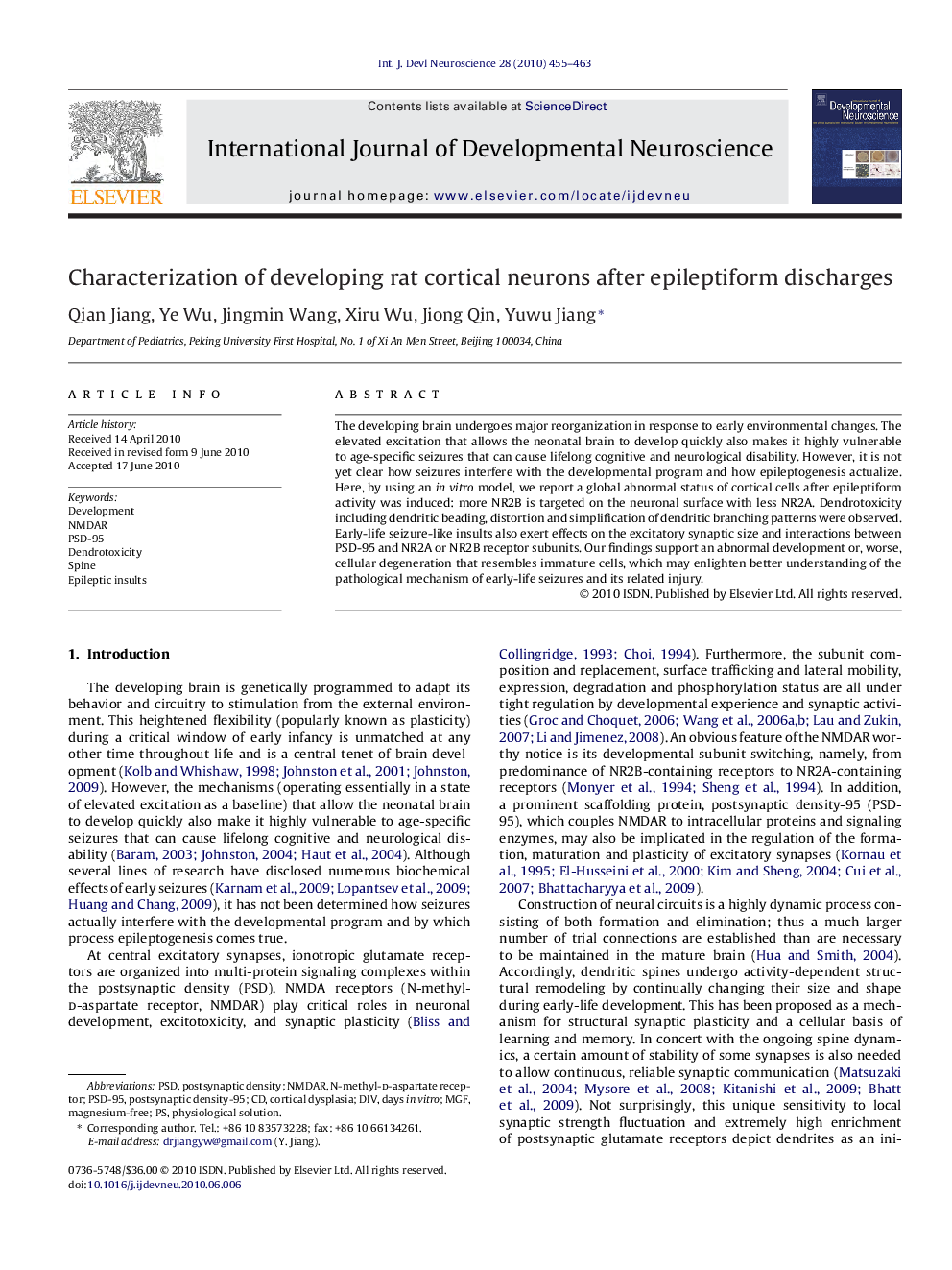| Article ID | Journal | Published Year | Pages | File Type |
|---|---|---|---|---|
| 2786601 | International Journal of Developmental Neuroscience | 2010 | 9 Pages |
The developing brain undergoes major reorganization in response to early environmental changes. The elevated excitation that allows the neonatal brain to develop quickly also makes it highly vulnerable to age-specific seizures that can cause lifelong cognitive and neurological disability. However, it is not yet clear how seizures interfere with the developmental program and how epileptogenesis actualize. Here, by using an in vitro model, we report a global abnormal status of cortical cells after epileptiform activity was induced: more NR2B is targeted on the neuronal surface with less NR2A. Dendrotoxicity including dendritic beading, distortion and simplification of dendritic branching patterns were observed. Early-life seizure-like insults also exert effects on the excitatory synaptic size and interactions between PSD-95 and NR2A or NR2B receptor subunits. Our findings support an abnormal development or, worse, cellular degeneration that resembles immature cells, which may enlighten better understanding of the pathological mechanism of early-life seizures and its related injury.
